In the YouTube Naughty Corner
Mark Honeychurch - 24th June 2024
In preparation for my article this week about my visit to a creationist talk, I logged into the NZ Skeptics’ YouTube channel to upload some videos of the event I’d recorded. When I logged in, I was greeted with a warning about how we had violated one of YouTube’s Guidelines:
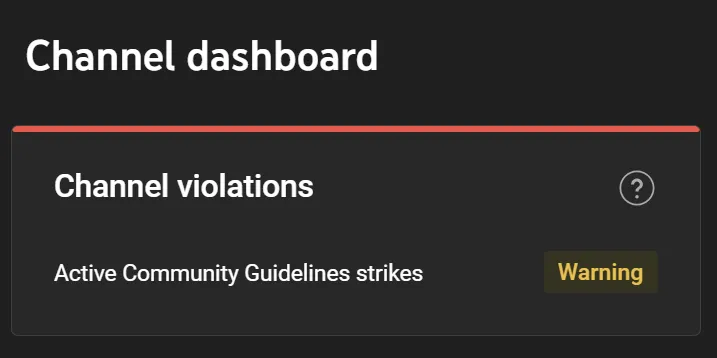
So, which of our videos caused this problem? It was a video from our 2016 conference in Queenstown, where Loretta Marron talked about some of the worst cancer cure claims she’s seen and challenged, in a talk titled “Crazy Cruel Cancer Cures”.
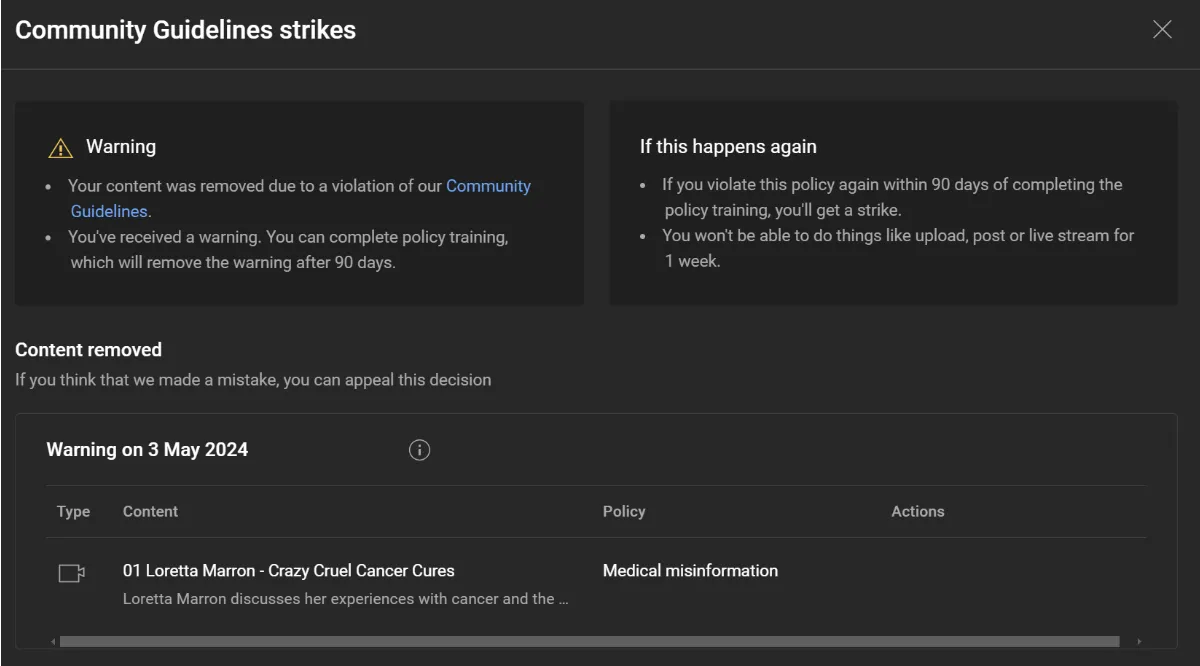
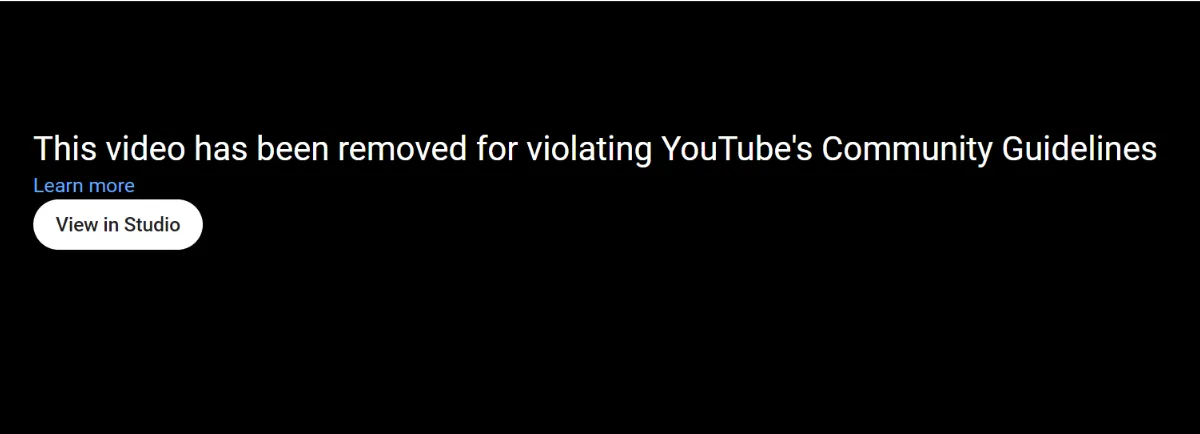
I was able to appeal the decision, but when I did this there was nowhere to tell Google why I chose to appeal and why I think their decision was wrong. Without this ability to explain how they’ve misunderstood the content and intent of the video, I have a strong suspicion that they’ll just make the same mistake again. Once I had appealed, the app told me that I was able to take “policy training” to clear the strike we have received.
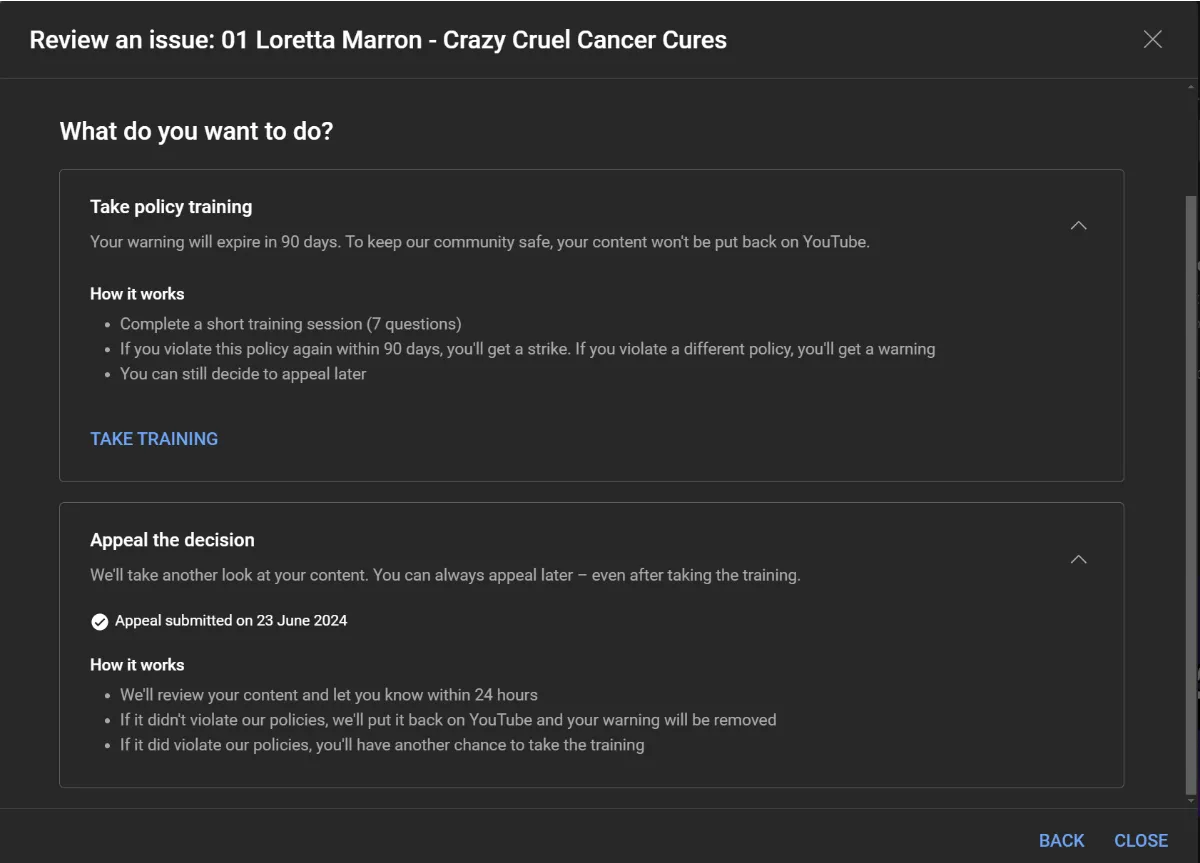
I started with question one, which was a pretty cut and dried example of harmful nonsense:
“A creator uploads a video recommending that viewers place colloidal silver serum, a potentially harmful substance, in their ears, nose or throat to effectively treat sinus infections and manage allergies. The creator swears by it and says that they’ve seen it work.
Is this a violation?”
Next to the question was a box detailing the relevant policy.
Promoting harmful substances and practices
Content that promotes harmful substances, treatments or substances that present an inherent risk of severe bodily harm or death isn’t allowed on YouTube.
Examples of this content include:
- Content that promotes alternative abortion methods in place of the chemical or surgical methods that are deemed safe by health authorities
- Content that promotes the following harmful remedies, cures and substances for alleged health benefits: Miracle Mineral Solution (MMS), black salve, turpentine, B17 (amygdalin), high-grade hydrogen peroxide, chelation therapy to treat autism, colloidal silver, petrol, diesel, kerosene
We may allow content that includes medical misinformation if the content has educational, documentary, scientific or artistic context. We may also make exceptions for content discussing the results of a specific medical study, sharing personal testimony or showing an open public forum, like a protest or public hearing, provided that the content does not aim to promote misinformation that violates our policies. These exceptions aren’t a pass to promote medical misinformation.
I passed this first of seven questions, because it was so bleeding obvious.
Question two, however, I answered wrongly, because I naively guessed that low-level medical misinformation, like claiming that a disgusting-tasting garlic and orange peel tea can “boost” your immune system, is also not okay. The question read:
“A creator films his grandmother while she prepares her garlic and orange peel tea, which she has had every day since she was a child. The grandmother says that she doesn’t know if the tea will prevent her from getting COVID-19, but it makes her feel strong and boosts her immune system.
Is this a violation?”
I answered “Yes, it is”, but apparently I was wrong, as the policy is only concerned with “specific health conditions”, and not more generic therapeutic claims.
Prevention, treatment and disease denial misinformation
Content that contradicts information from local health authorities or the World Health Organization and spreads medical misinformation about the transmission, prevention, treatment or existence of specific health conditions and substances isn’t allowed on YouTube.
For example, we don’t allow content that contains the following misinformation or makes these claims:
- Content that promotes transmission information that contradicts local health authorities or the World Health Organization
- Content that promotes COVID-19 prevention methods that contradict local health authorities or the World Health Organization
- Content that discourages viewers from seeking medical treatment for COVID-19
- Content that promotes the use of substances or treatments that can cause severe bodily harm or death to treat COVID-19
- Explicit denial of the existence of COVID-19
We may allow content that includes medical misinformation if the content has educational, documentary, scientific or artistic context. We may also make exceptions if the purpose of the content is to condemn, dispute or satirise the misinformation that violates our policies. We may also make exceptions for content discussing the results of a specific medical study, sharing personal testimony or showing an open public forum, like a protest or public hearing, provided that the content does not aim to promote misinformation that violates our policies. These exceptions aren’t a pass to promote medical misinformation.
I was given an opportunity to try the question again, as many times as I wanted, until I answered correctly. I guess this is how re-education works - by being coaxed into selecting what Google considers to be an acceptable answer, I’m learning about misinformation and what they consider to be okay or not.
After this, the remaining five questions all focused on cancer and abortion, which I guess may be two major areas where the YouTube platform sees a lot of misinformation being submitted.
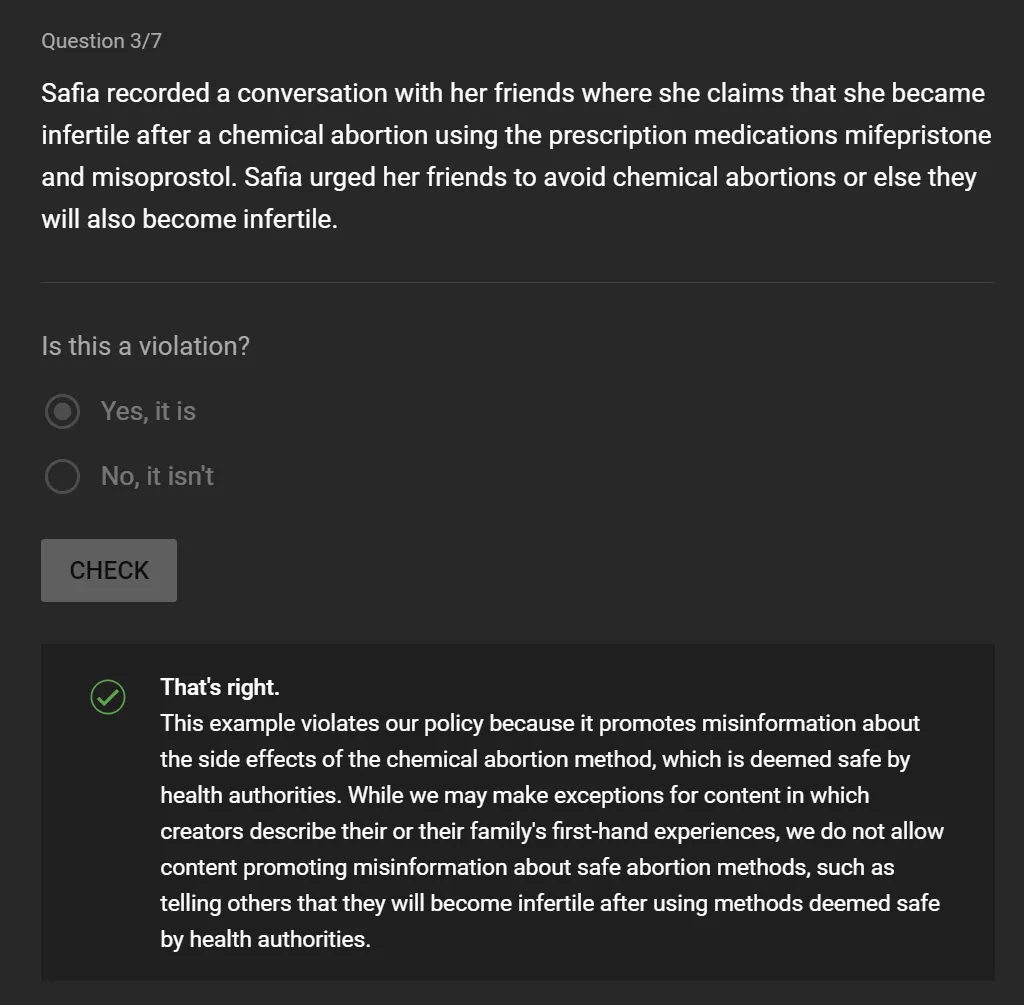
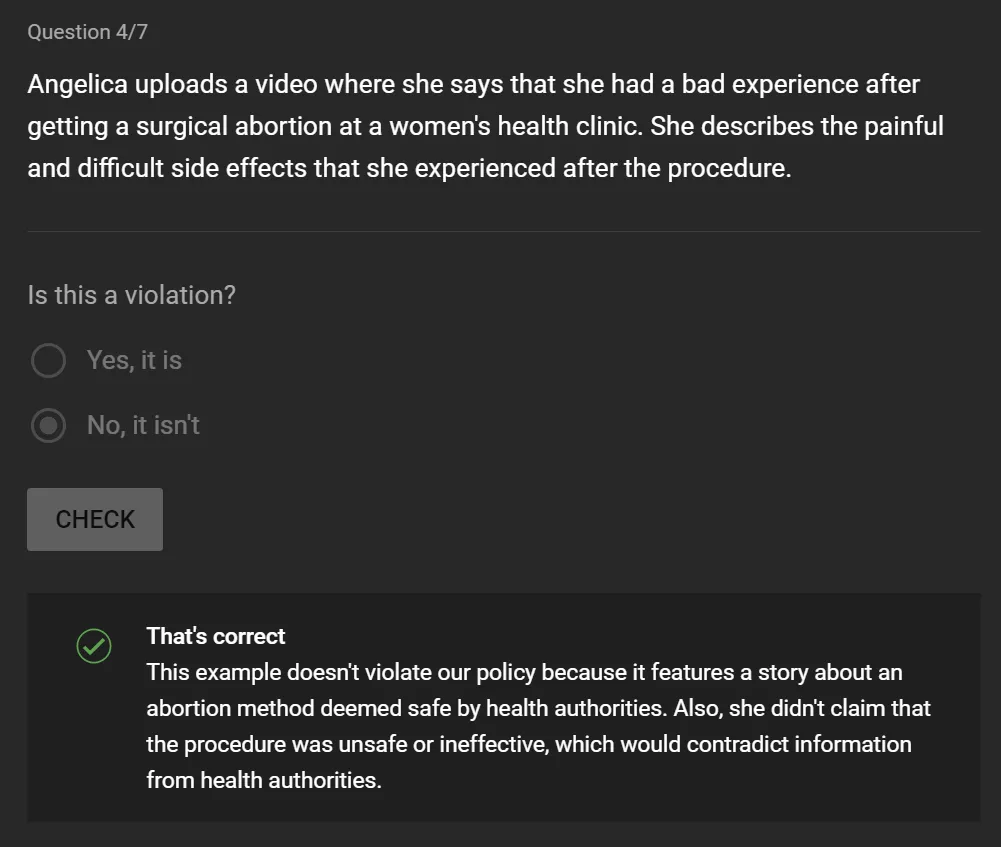
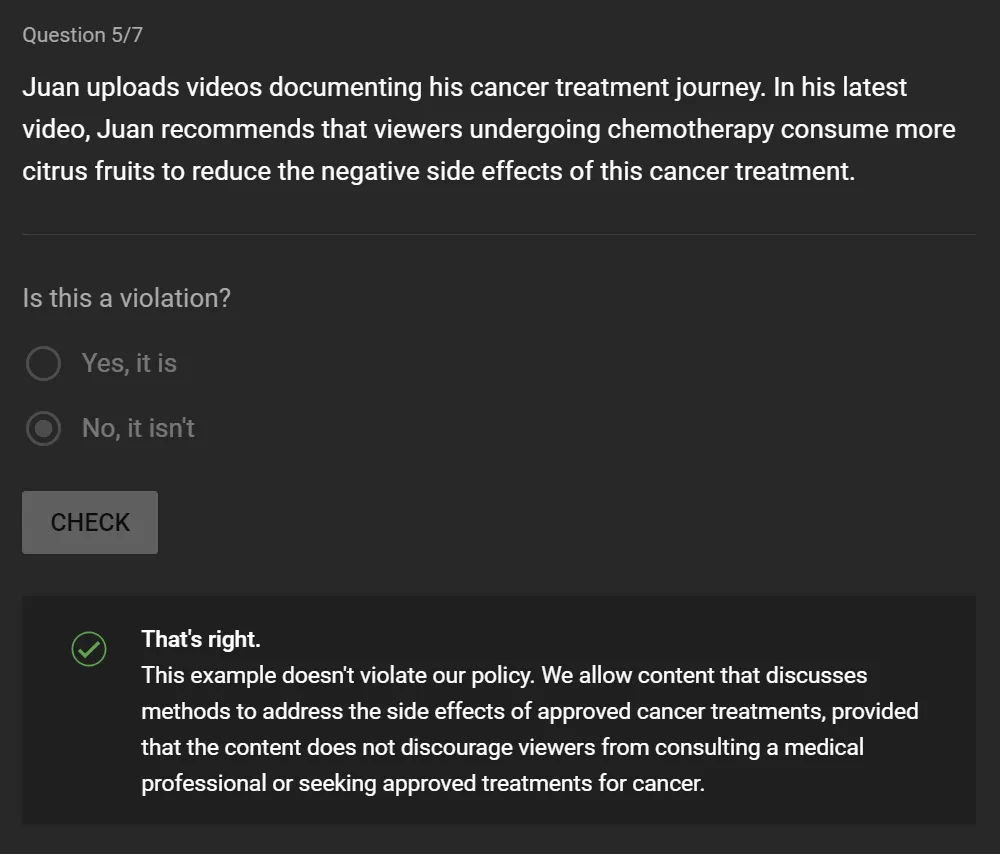

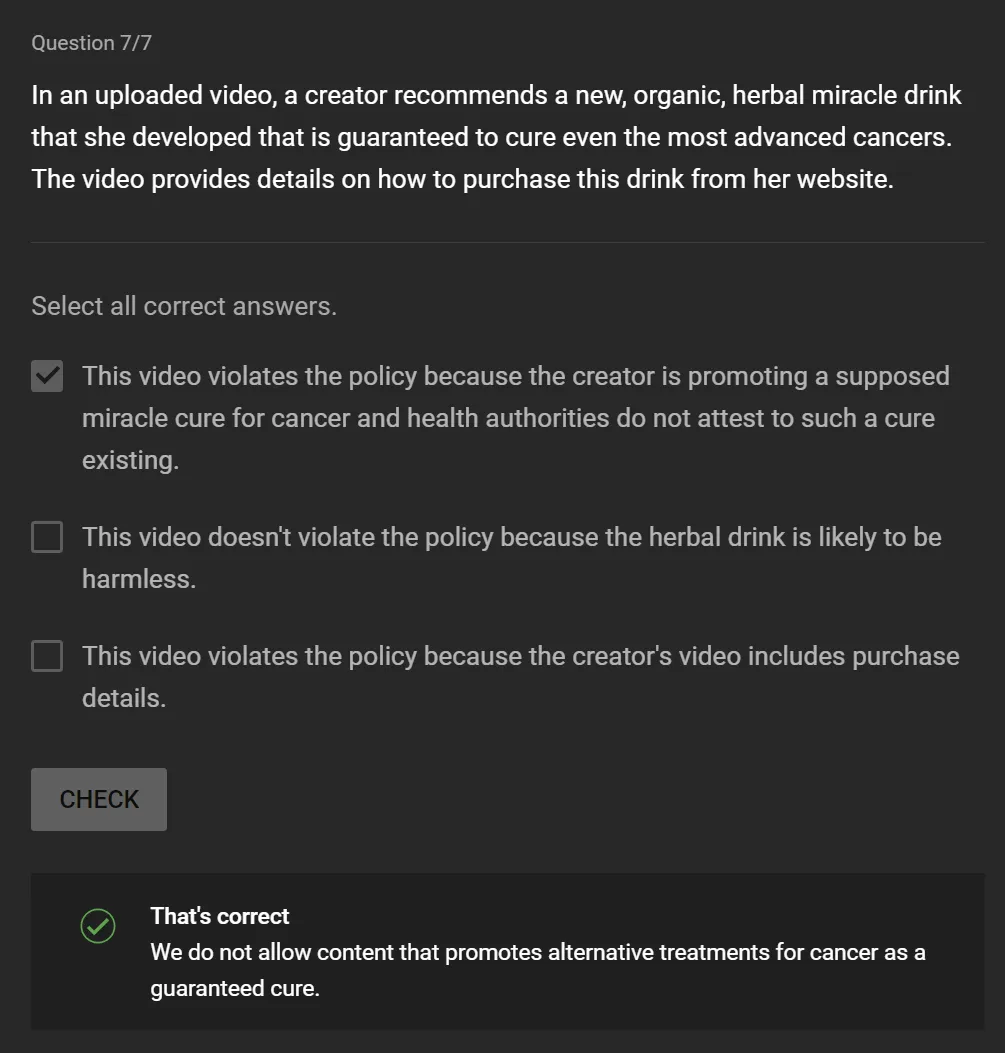
These were accompanied by two more policy documents:
Promoting harmful substances and practices
Content that promotes harmful substances, treatments or substances that present an inherent risk of severe bodily harm or death isn’t allowed on YouTube.
Examples of this content include:
- Content that promotes alternative abortion methods in place of the chemical or surgical methods that are deemed safe by health authorities
- Content that promotes the following harmful remedies, cures and substances for alleged health benefits: Miracle Mineral Solution (MMS), black salve, turpentine, B17 (amygdalin), high-grade hydrogen peroxide, chelation therapy to treat autism, colloidal silver, petrol, diesel, kerosene
We may allow content that includes medical misinformation if the content has educational, documentary, scientific or artistic context. We may also make exceptions for content discussing the results of a specific medical study, sharing personal testimony or showing an open public forum, like a protest or public hearing, provided that the content does not aim to promote misinformation that violates our policies. These exceptions aren’t a pass to promote medical misinformation.
Treatment misinformation
Content that recommends the use of specific methods for the treatment of cancer when those have not been approved by local health authorities or the World Health Organization as safe or effective or have been confirmed to be harmful or ineffective for cancer treatment isn’t allowed on YouTube.
For example, we don’t allow content that contains the following misinformation or makes these claims:
- Content that claims that approved treatments for cancer are never effective or that alternative treatments are safer or more effective than approved treatments
- Content that promotes alternative treatments for cancer as a guaranteed cure or recommends alternative treatments in place of approved treatments
We may allow content that includes medical misinformation if the content has educational, documentary, scientific or artistic context. We may also make exceptions if the purpose of the content is to condemn, dispute or satirise the misinformation that violates our policies. We may also make exceptions for content discussing the results of a specific medical study, sharing personal testimony or showing an open public forum, like a protest or public hearing, provided that the content does not aim to promote misinformation that violates our policies. These exceptions aren’t a pass to promote medical misinformation.
After I had deliberately answered each of these five questions wrongly before re-answering them correctly, just to see if this would have any bearing on whether I would pass my “training”, I was congratulated for completing the course. I guess even a monkey at a keyboard would probably pass this training eventually.
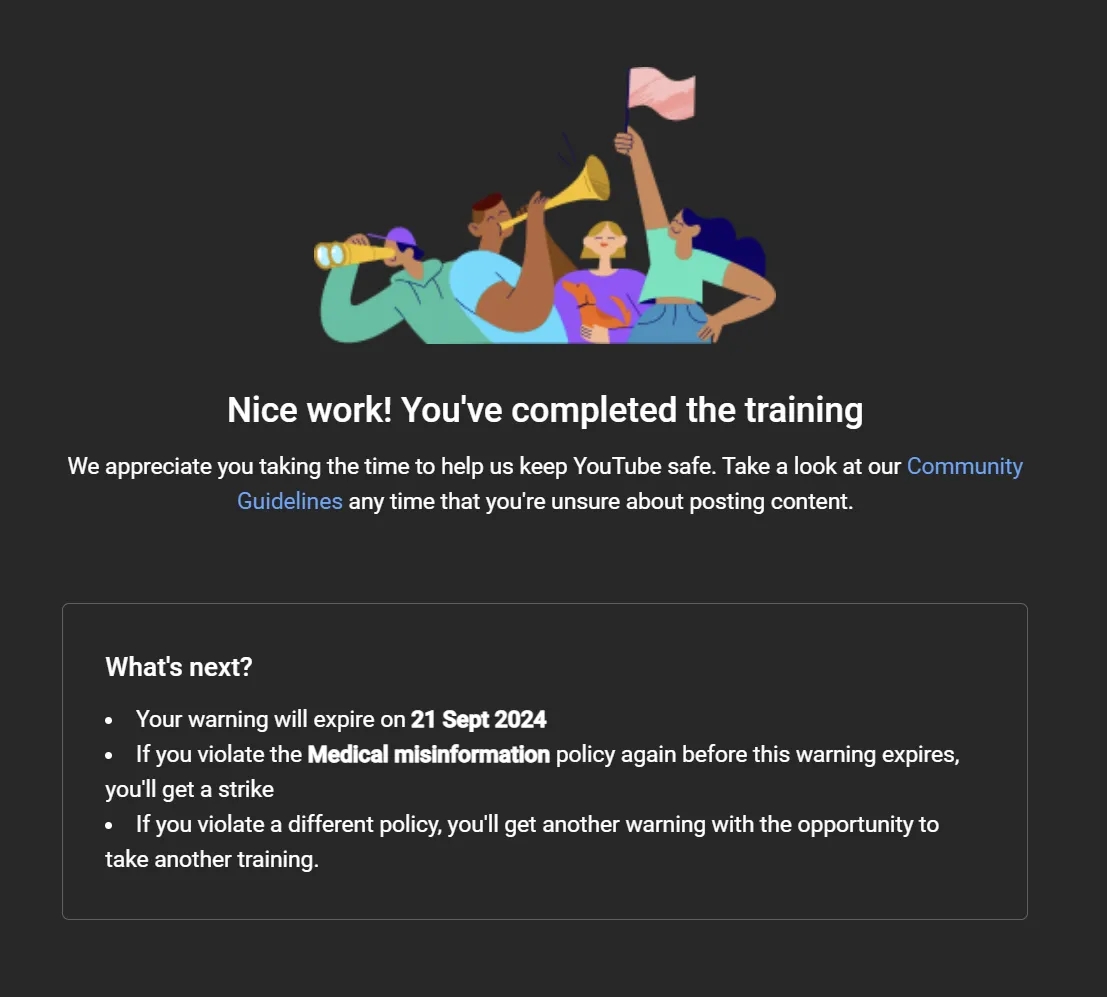
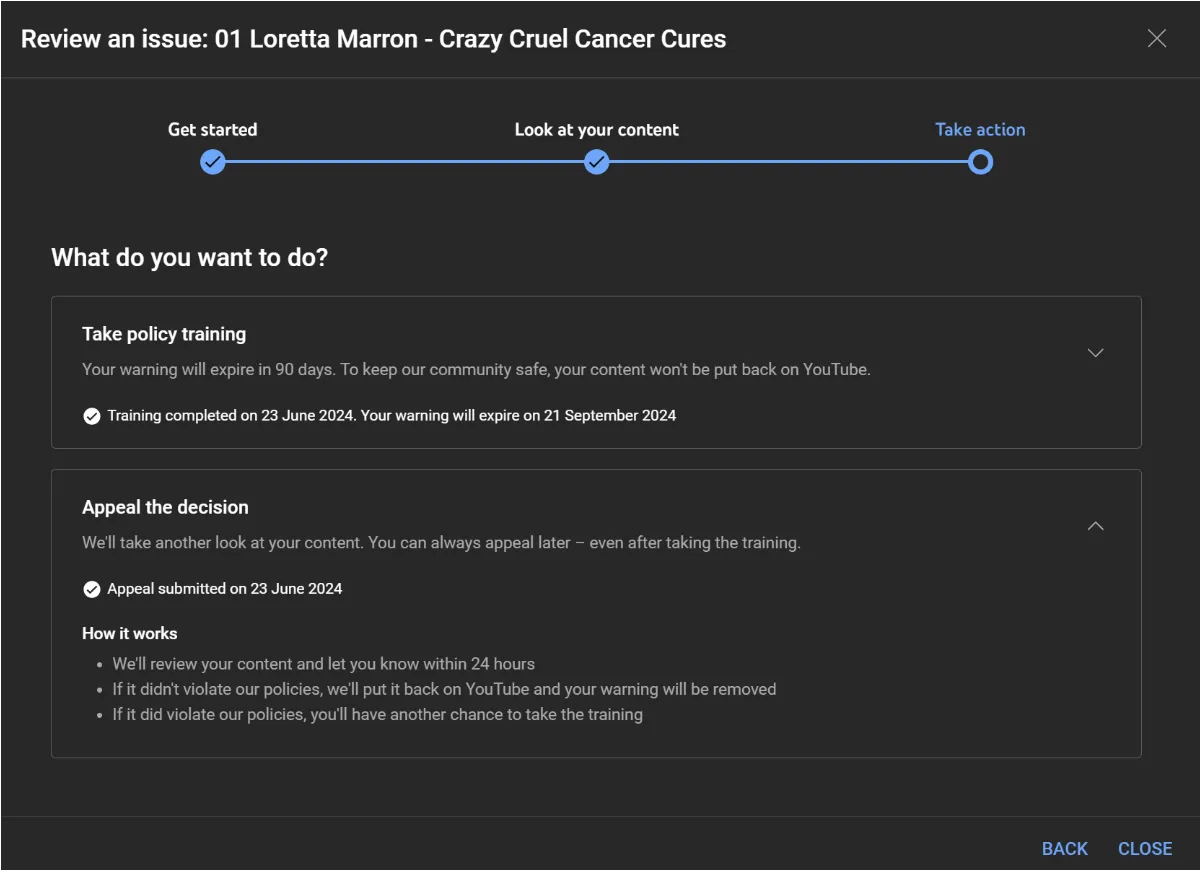
I’m now awaiting the result of my appeal, although I suspect it’s going to end up with the same daft result with a lack of actual effort to watch and understand the video. Heck, it might even be that this appeal, and the original decision, are devoid of any human input. It wouldn’t surprise me, given the volume of videos that are posted to YouTube every day, if the entire process is handled by various scripts and algorithms. I guess that’s the price we have to pay for wanting to have all of these cool technologies for free.
